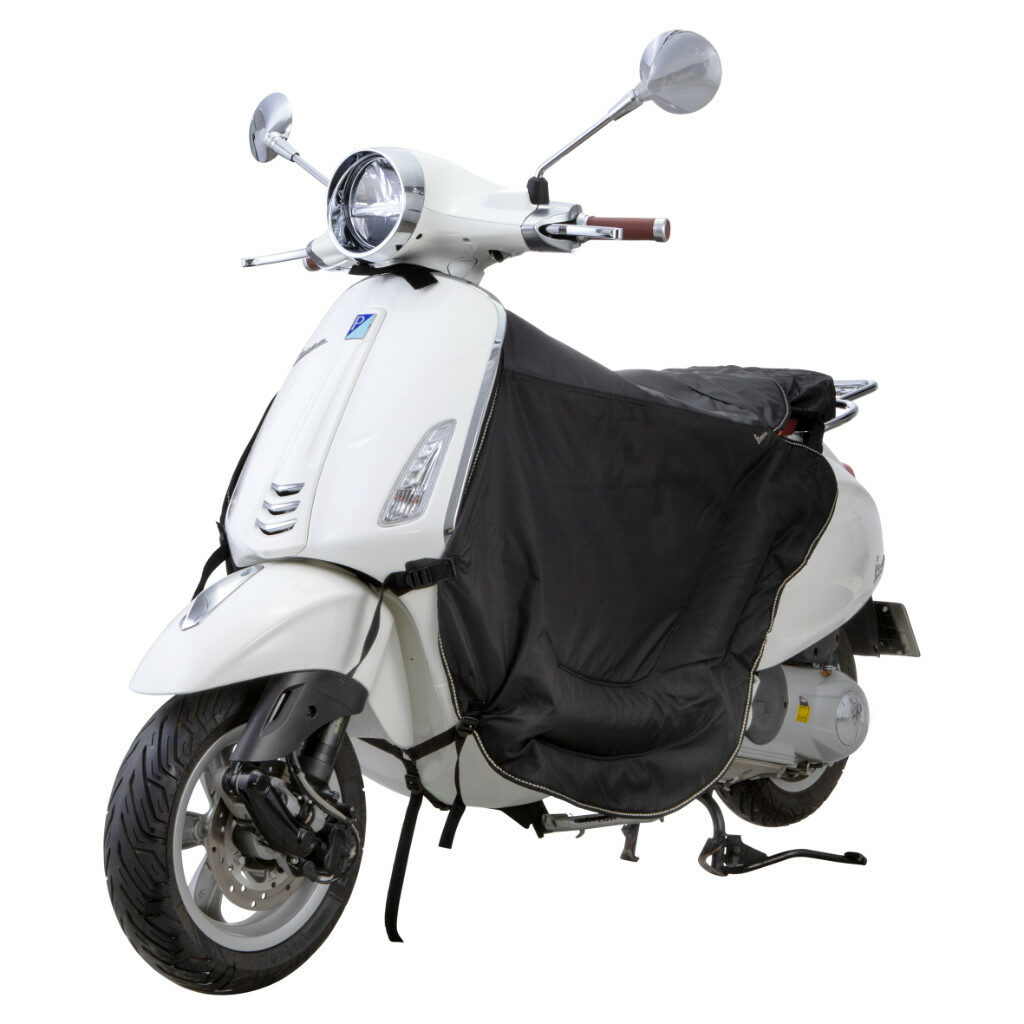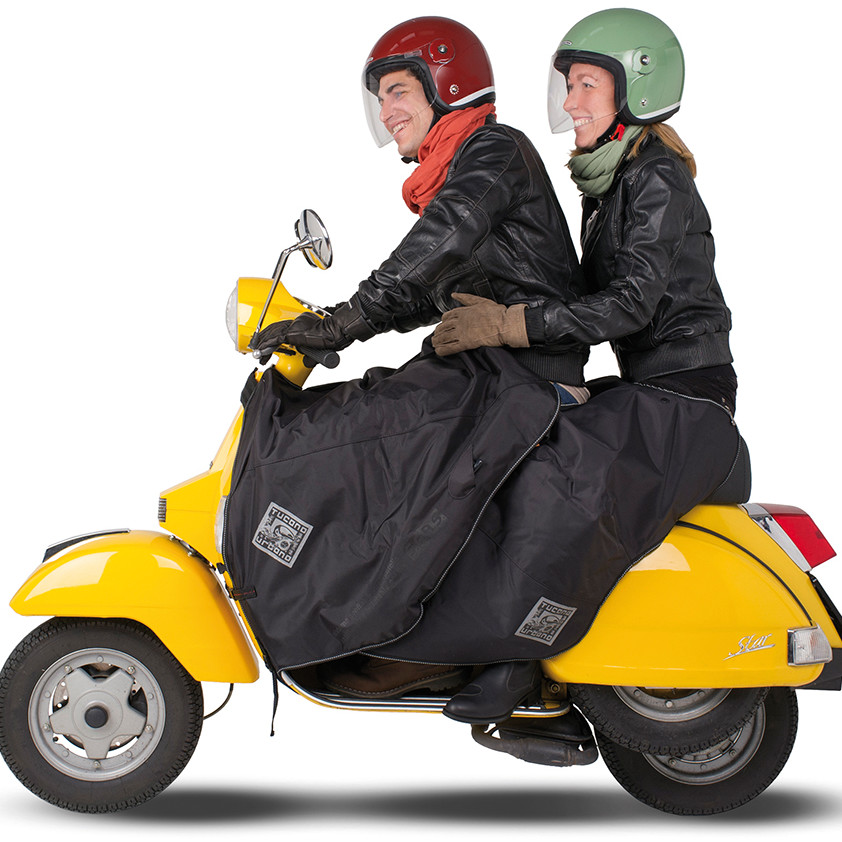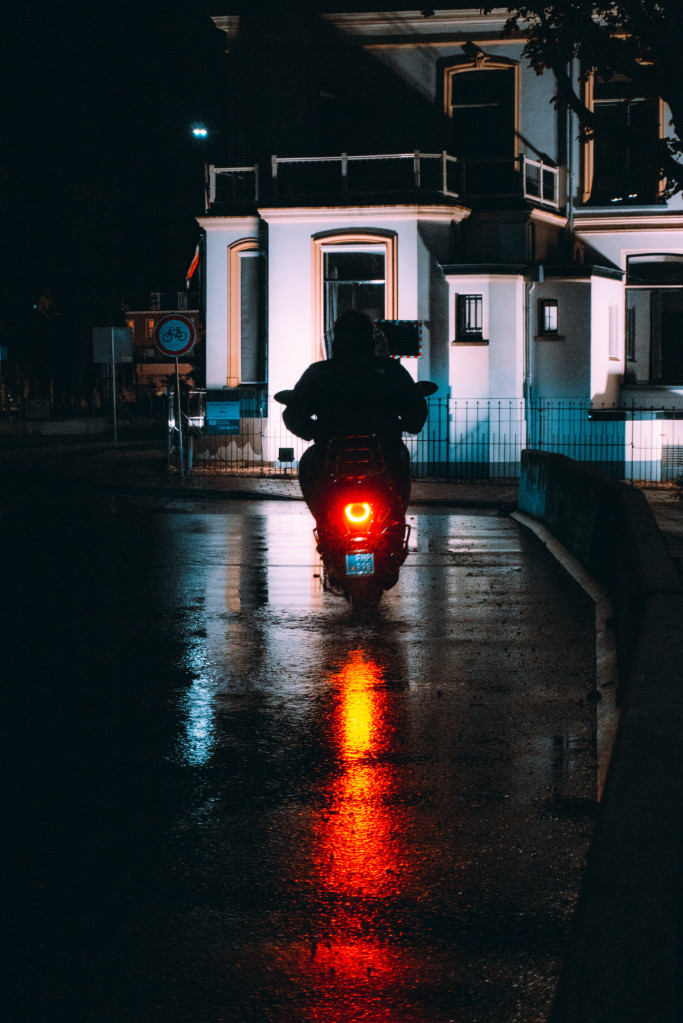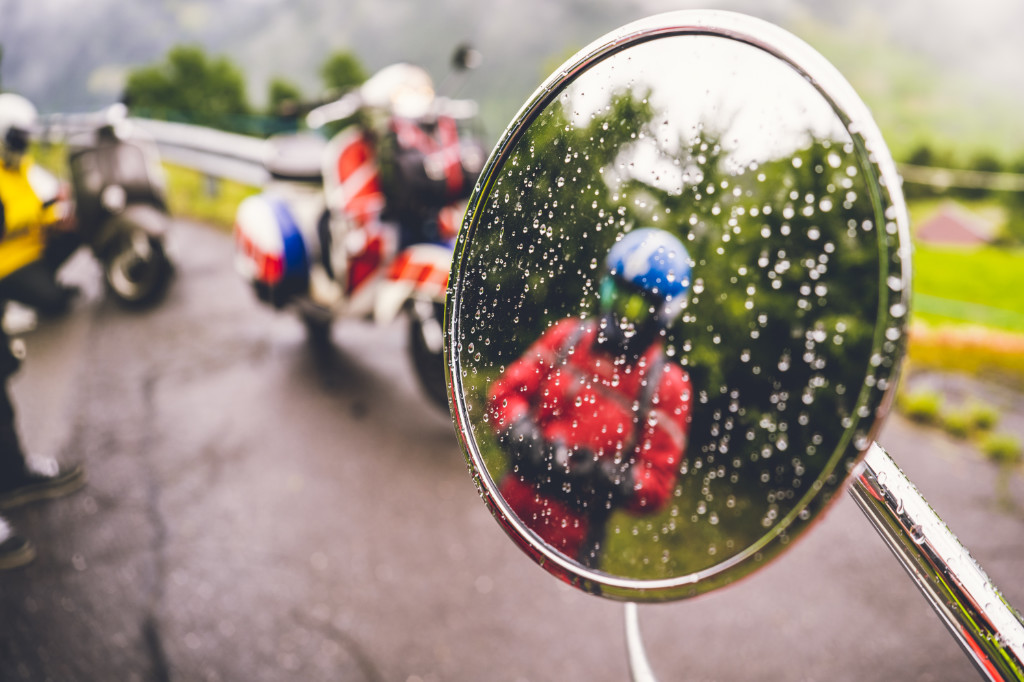With the right rain cover, scooter riders are safe on the road even in rainy weather and so a ride on the Vespa can be really fun even when it’s wet.
It’s not so great to get wet, but with the appropriate protective clothing this is doable.
There are very different materials, depending on whether shorter or longer distances have to be covered. Especially if you ride your Vespa every day, you should consider investing in proper rainwear.
Rain jackets and trousers are used, either individually or as a combination, so there is a free choice. There are also complete covers that protect against wind at the same time. Leg protection can also be very useful. Sturdy shoes are also important. When wearing gloves, it is advisable to make sure that they have a rubber lip. This is usually on the left glove and can be used to conveniently wipe the visor free. These are also available separately. A good helmet is also important, preferably with an anti-fog visor. Scooter riders can also convert a normal helmet to Pinlock. If the visor still tarnishes, an anti-fog spray can help. A rain bonnet can also help, as it provides a waterproof transition between helmet and jacket and keeps you warm. If you’ve thought of everything, riding a scooter in the rain can be fun.


Watch out for the weather!
When riding a scooter in the rain, double attention is important. The road can quickly turn into a dangerous track, especially on cobblestones. The main focus is on the tyres, so it is best to make sure they are of good quality and always check that the tyre tread still fits. It is also extremely important that the brakes are in top condition.
A gentler riding style is definitely advisable in order to be safe on the road with the Vespa scooter even in the rain.
It is not only in the curves that it becomes more slippery when it is wet, scooter riders also have to pay more attention on straight stretches of road, as visibility is also often restricted. Tyre grip should not be underestimated; dust, oil and rubber abrasion in the pores can act like soft soap the next time it rains. It is particularly slippery shortly after the onset of rain, and special care should be taken here. If the motorbike is exposed to prolonged rain, the grip can improve again because dirt and other particles have been loosened by the moisture.
Be especially careful with manhole covers and road markings, as they are even more slippery in the rain. Above all, a longer braking distance must be taken into account. Aquaplaning can make braking even more difficult. These tripping hazards must all be taken into account, so take your foot off the accelerator, slow down and drive in an adapted manner. In any case, avoid jerky driving and thus blocking. If you also keep a double distance between you and the scooter, you’ll be able to enjoy the ride.
Preparing the scooter for rain
It is important to check the brakes from time to time to make sure they are still in good working order. Especially in wet road conditions, full braking should be avoided if possible. Whether the lights are working properly is just as important, especially the brake lights and the indicator lights. It is often darker when it is raining and more caution is required among each other in slippery road conditions. If it starts to rain before you start your journey, it can be useful to do a trial run before a longer trip. If other road users can react better, then nothing stands in the way of an excursion with the scooter.





Comments (1)